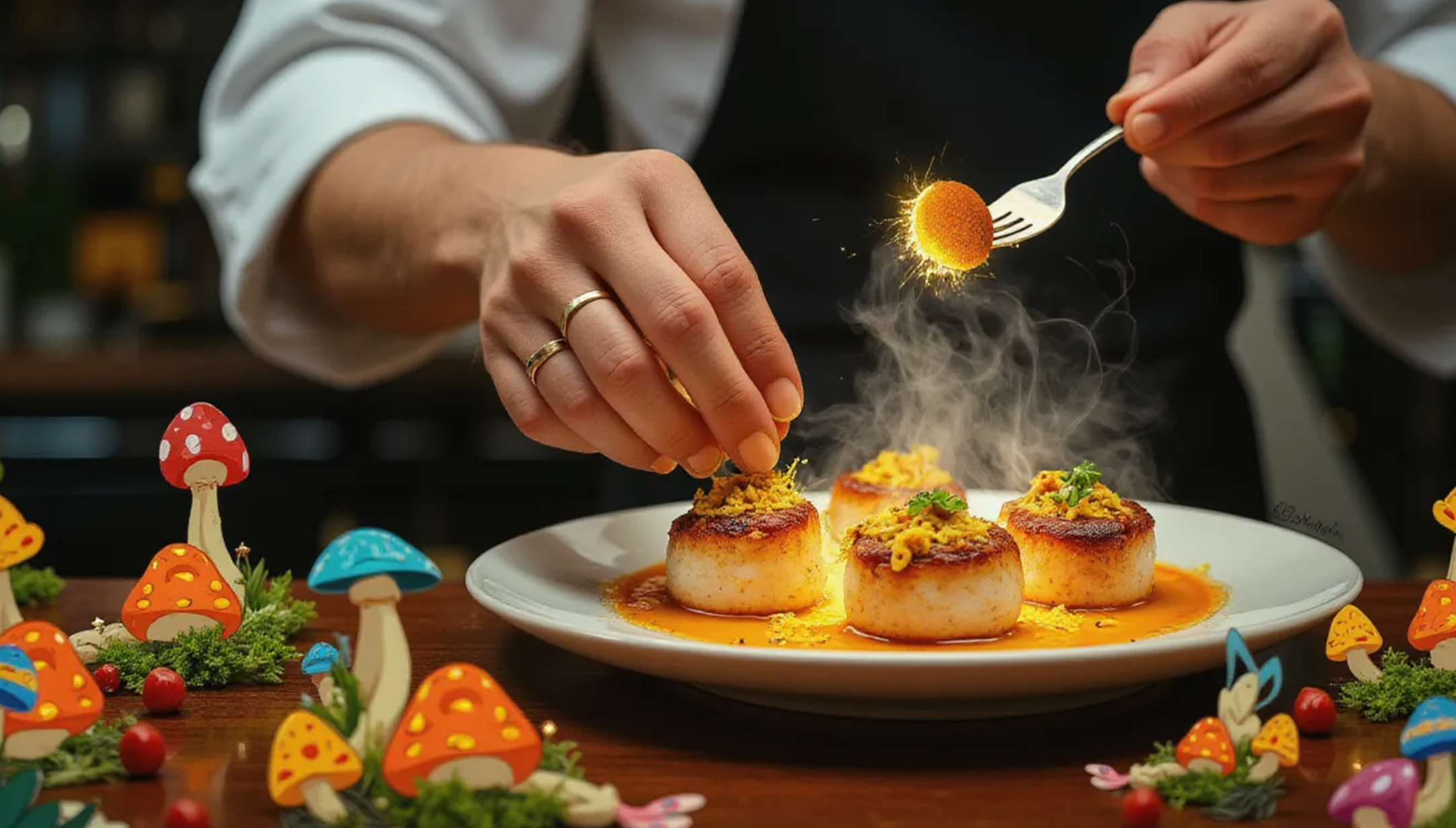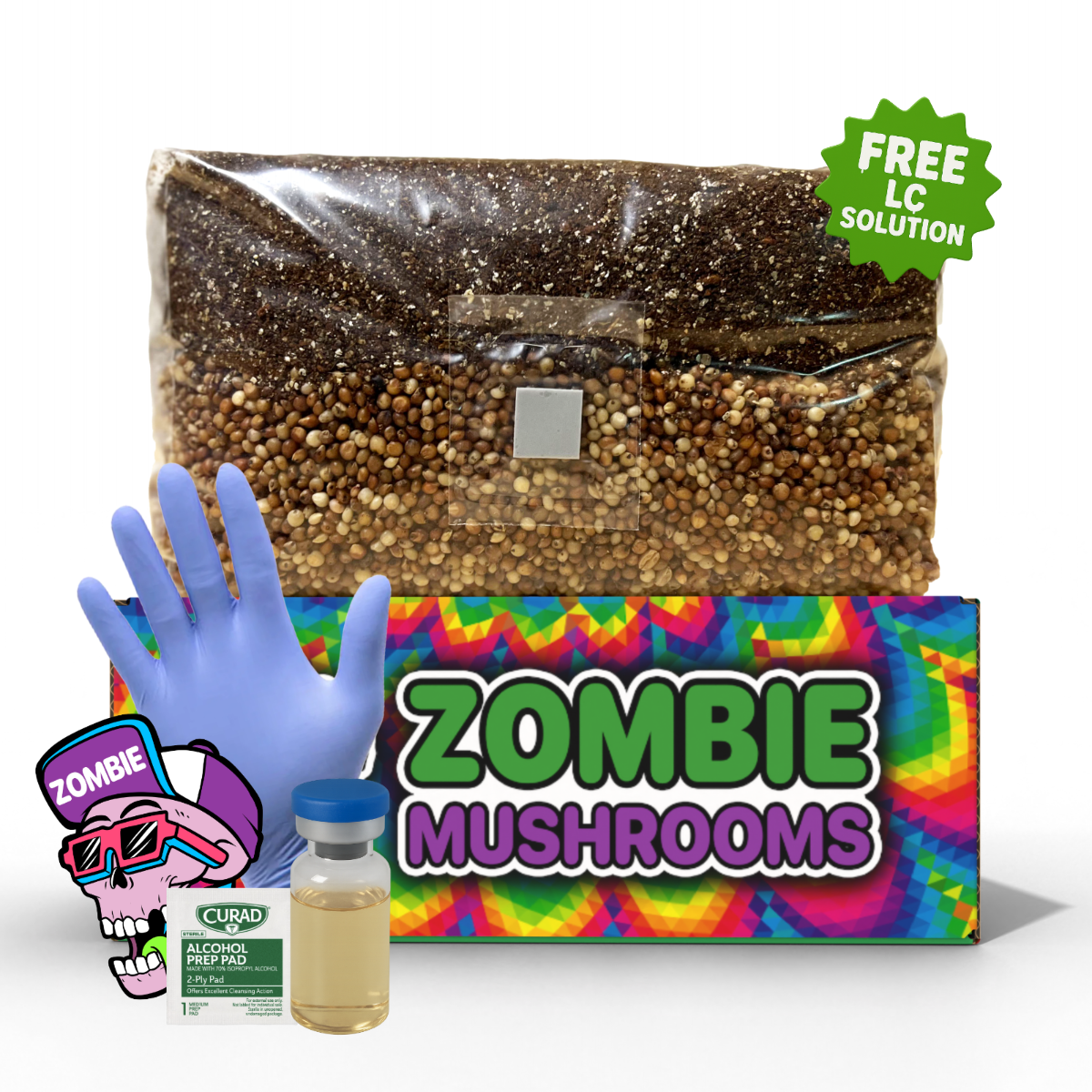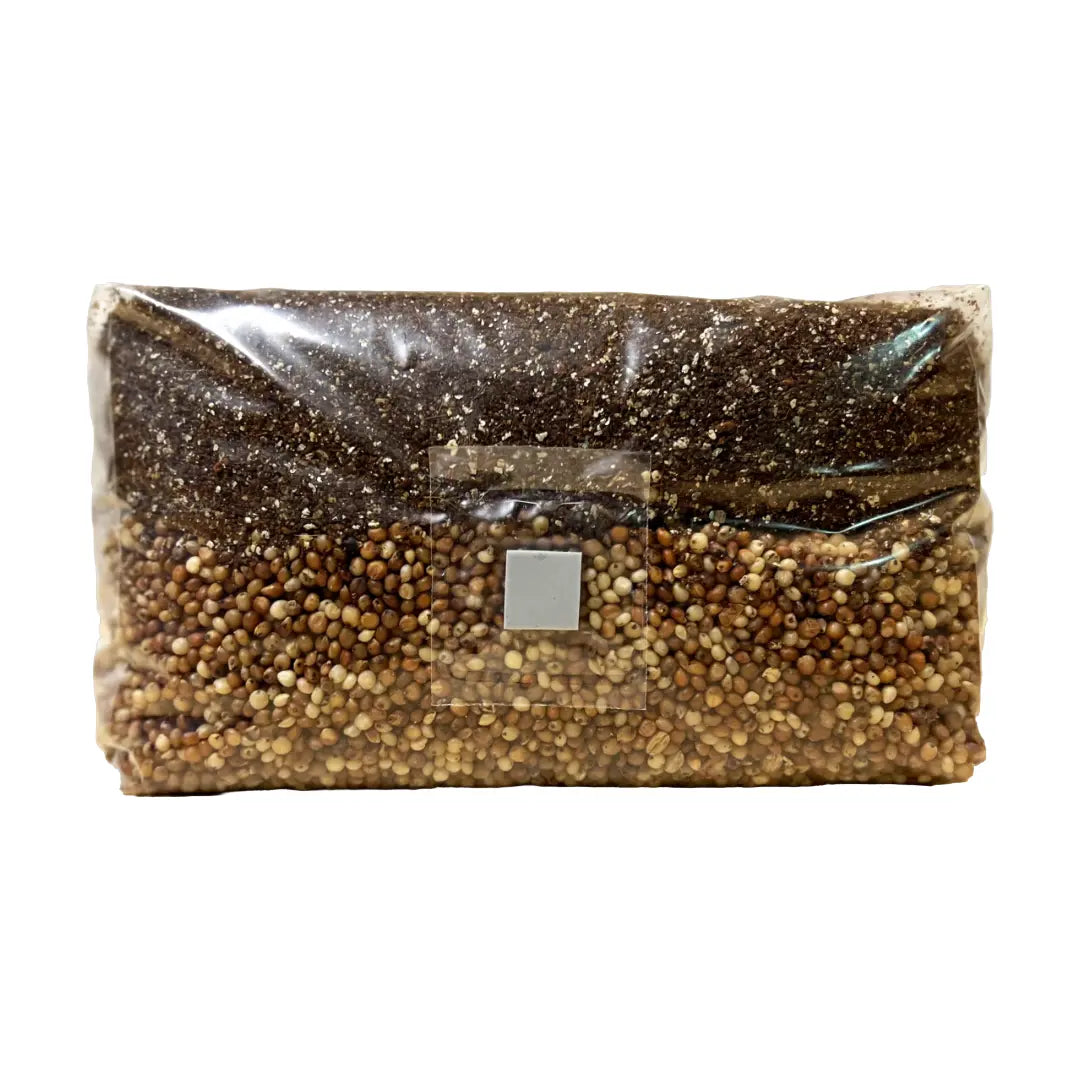⬇️ Prefer to listen instead? ⬇️
- Mushroom-based meals are planned by 74% of chefs to meet meat-free dining demand.
- Gourmet mushrooms require significantly less land and water than livestock.
- Demand for lion’s mane mushrooms has risen 45% in recent years.
- Lion’s mane and king oyster mushrooms deliver textures similar to shellfish and beef.
- Fine dining restaurants increasingly source gourmet mushrooms from local or urban farms.
Walk into any fine dining kitchen today, and you're just as likely to hear chatter about maitake and lion’s mane as you are about foie gras or filet mignon. Gourmet mushrooms have become very popular in the cooking world. They are liked for their bold, complex tastes. Also, they are sustainable and healthy. Chefs are trying new ways to use them, often focusing on plant-based dishes. And it's not just in fancy restaurants; home cooks and mushroom fans are joining in, with many turning to grain spawn bags to grow gourmet mushrooms of their own.

Why Gourmet Mushrooms Are a Chef’s Best Friend
Gourmet mushrooms are really helpful in fancy restaurant kitchens. It's easy to see why. Chefs like them for three main reasons: deep flavor, different textures, and they can be used in many ways. These mushrooms have a lot of umami naturally. Umami is that savory taste along with sweet, salt, sour, and bitter. This means they are great for adding rich, full flavor without needing heavy sauces or meat.
People around the world are eating more plant-based meals and sometimes eating meat. Gourmet mushrooms are a sustainable option that still tastes great. They can feel and chew like animal protein. This helps dishes feel rich and satisfying, even if they are vegan or gluten-free. Diners get to enjoy something special. So, these mushrooms are a useful tool for chefs.

Most Popular Gourmet Mushrooms in High-End Kitchens
Each gourmet mushroom is different on the plate. Besides being healthy, these mushrooms have unique tastes, looks, and uses. This gives chefs ideas for new dishes.
-
Shiitake – Grown mostly in East Asia, shiitake mushrooms are earthy and have a lot of umami. Chefs often use them in broths, ramen, stir-fries, or dishes cooked slowly. They have a firm shape that works well with different cooking methods. And they soak up marinades very well.
-
Maitake (Hen of the Woods) – These are known for being light and feathery. They have a rich taste when roasted. They get nice and crispy when baked. People use them a lot in Japanese-style cooking. But they are popular everywhere because they taste so deep.
-
Lion’s Mane – This mushroom looks fluffy, like a pom-pom. People often say it tastes and feels like crab or lobster. So, it's used instead of seafood in vegan dishes. It’s great for searing in a pan, pulling apart, or making into plant-based steaks or jerky.
-
King Trumpet (King Oyster) – These have thick stems and small tops. People like the stems a lot because they are chewy. Chefs often cook them like “scallops.” Or they cut them long to feel like a steak or seafood dish that doesn't use meat.
-
Chanterelles – These are beautiful wild mushrooms. They taste a bit fruity, like apricot. Most are picked in the wild. They are bright gold or orange and have a soft texture. This makes them popular in French and Nordic cooking.
-
Enoki – These mushrooms are thin, like noodles. They are crunchy and have a mild taste. They are often used in hot pots, Asian soups, salads, and for pickling. They look unusual, which makes plates look interesting.
-
Black Pearl – This is a new kind of oyster mushroom made by combining others. It has a deep flavor and is thick and smooth. It feels like meat. So, it's good for grilling, broiling, or using instead of meat in tacos and wraps.
There are so many different kinds. Chefs can choose mushrooms to fit different cooking ideas and times of the year. This helps them make menus that keep changing and are interesting.

Texture & Technique: Preparing Mushrooms Like a Pro
People like gourmet mushrooms not just because they taste good. Texture is a big part of it. Fancy restaurants know that cooking mushrooms the right way can make the final dish much better.
-
Roasting: Cooking mushrooms like maitake or oyster at high heat can make their edges crispy. This brings out their natural sweetness and makes them savory and crunchy.
-
Searing: Cooking a slice of king oyster mushroom in butter or oil in a hot pan makes the outside brown and sweet. It looks like the crust on a steak or scallop. It's easy but makes a big difference.
-
Sautéing: This is a common way to cook mushrooms. Cook them in layers – first without fat, then with fat. This makes them deep golden and gives them strong umami flavor. Lion's mane is especially good this way. It gets a texture like pulled crab meat.
-
Sous Vide: This method cooks mushrooms slowly in a water bath. It keeps them moist and brings out their smells. It’s a good way to add flavors from herbs and spices slowly.
-
Smoking and Confit: Smoking mushrooms adds a country style flavor. This goes well with wines and grilled meats. Mushroom confit means cooking them slowly in oil. Sometimes chefs add garlic or thyme. It tastes rich and creamy. It goes very well with crusty bread or salads.
The trick? Cook mushrooms carefully, just like you would meat or seafood. And they will taste and feel as good as a steak or fish dish.

The Role of Umami: Deep Flavors Without Meat
Umami is that deep, savory taste that makes a dish satisfying. Mushrooms have a lot of it, especially the gourmet kinds like shiitake, lion’s mane, and maitake. They are full of things that make the umami taste buds in your mouth light up.
A report from 2021 by the Culinary Institute of America said that 74% of chefs planned to use more mushrooms. This was because mushrooms can taste as rich as meat. (Menus of Change Annual Report, 2021). So, vegan and vegetarian dishes get more rich flavor. And this happens without adding fake ingredients or changing the food too much.
Putting mushrooms together with things that have a lot of umami, like soy sauce, fermented miso, vegan Worcestershire sauce, or kombu, makes that savory taste even stronger. You can add gourmet mushrooms to many dishes – pasta sauces, tacos, grain bowls. It’s an easy way to get deep flavor.

Fine Dining Recipes That Highlight Mushrooms
Gourmet mushrooms are now showing up on menus everywhere. They are a key part of dishes that show off new ideas and sustainability. Here are some great ways chefs use them:
-
Wild Mushroom Risotto: Creamy rice dish cooked with truffle oil and cooked mushrooms like chanterelles or shiitake. Chefs add herbs and small greens on top. It’s a comforting meal that feels special because it uses mushrooms from the woods.
-
Maitake Confit with Miso Glaze: Maitake mushrooms cooked slowly and brushed with a glaze made of miso and rice vinegar. It tastes sweet and salty with a lot of umami. It starts crispy and ends up very soft.
-
King Oyster Mushroom “Scallops”: Thick slices of mushroom stems cooked in a pan until golden. Chefs put them on a plate with lemon, garlic confit (garlic cooked slowly in oil), and sea salt. It feels like eating scallops but without seafood.
-
Raw Mushroom Carpaccio: Thin slices of raw mushrooms (like lion’s mane or black pearl). Chefs add truffle oil, fresh lemon zest, and some nutritional yeast or parmesan. It’s a light dish that shows the mushroom's earthy taste.
-
Lion’s Mane Steak or Jerky: Grilled lion’s mane mushroom, either whole or cut into strips. It's marinated in tamari and smoked paprika. It looks and feels like smoked brisket or jerky. It's very good and satisfying.
These dishes taste really good. They also make people think about new ways to cook. It's good for both diners and chefs.

Sustainability and Health: Two More Reasons Chefs Choose Fungus
Gourmet mushrooms taste great. Also, they are very sustainable and have health benefits. They are one of the best ingredients available today for these reasons.
Environmental upside:
- Require far less water and land than beef, pork, or even some plant crops.
- Can be grown in vertical or indoor farms using repurposed agricultural waste like sawdust or coffee grounds.
- Emit very little greenhouse gases compared to farming animals in large numbers.
Health perks:
- Have polysaccharides like beta-glucans. These are thought to help the immune system work better.
- Have antioxidants, prebiotics, fiber, and small amounts of minerals like selenium and potassium.
- Some kinds, like lion’s mane, might help protect the brain and support thinking. This is because they have compounds called hericenones and erinacines. Scientists are studying these compounds.
Mushrooms are good for you and good for the planet. This fits well with how people are thinking today. People want farming methods that improve the earth. And they want to eat in ways that support their health.

The Farm-to-Table Movement and Hyperlocal Sourcing
People want to know where their food comes from. Because of this, gourmet mushrooms are a good fit for the farm-to-table trend. More and more, chefs are buying from local farmers who grow certain kinds of mushrooms that are in season or are older types. Farms in cities and special growing rooms are sending restaurants mushrooms picked only hours before. Sometimes these are types you can't buy in stores.
Mushrooms grown very close by arrive fresher, last longer, and keep their nutrients better. Chefs can also talk to diners about where the mushrooms came from. This helps share a story about local community and clear sourcing.

From Forest to Plate: Wild vs. Cultivated Mushrooms in Fine Dining
Wild mushrooms, like morels, chanterelles, and porcini, are seen as special and often cost a lot. This is because you can only get them certain times of the year, and they are hard to find and pick.
Pros of wild mushrooms:
- Strong, natural flavor.
- You can only get them certain times of the year. So, chefs can offer them as special dishes for a short time.
- They taste like the place they grew. This links the food back to where it came from.
Cultivated mushrooms, like lion’s mane, enoki, and king oyster, can be grown all year. This means they are always available, and their price is more stable.
Better growing methods indoors (called CEA) mean that mushrooms grown on farms are now as good as those from the wild. So, chefs can plan menus that don't have to change just because the mushrooms in the woods are not ready.

The Chef’s Secret Weapon: Working with Mushroom Growers & Foragers
Smart chefs know that working with local mushroom growers can help them a lot. When restaurants work closely with small farmers or people who find mushrooms in the wild, they get very fresh, special mushrooms. These mushrooms make their menus better.
Chefs can arrange special deals to offer rare mushrooms for a short time or to try new recipes. Sometimes, growers will grow special new kinds of mushrooms just because a chef asked for them.
If you love cooking at home, mushroom grow kits like Zombie Mushrooms let you do something similar. They offer mushrooms that are almost as good as what chefs use. You can grow them right on your windowsill or counter.

How Home Chefs Can Recreate the Fine Dining Experience
You don’t need a fancy kitchen to make great mushroom dishes. If you use a few main cooking methods and good mushrooms, you can make meals that taste like they came from a restaurant:
- Always cook them in a dry pan first. This takes out the water inside and makes the flavor stronger.
- Use high heat. This helps mushrooms like king oyster or lion’s mane get a nice brown surface.
- Add more umami. You can add things at the end like soy sauce, balsamic glaze, or nutritional yeast.
- Don’t put too many in the pan at once. If they are too close, they steam instead of getting crispy.
- Add things that smell good, like shallots, tarragon, thyme, and garlic. Add them near the end so they don't burn.
If you start with gourmet mushrooms you grew yourself, you have a great base for flavor.

Gourmet Mushroom Grow Kits for the Curious Cook
Zombie Mushrooms and other good mushroom kits let you grow mushrooms in your kitchen. These kits are made to work well. They come with blocks or bags that already have the mushroom stuff in them. Mushrooms start growing in just days or weeks.
You can get kits for lion’s mane, pink oyster, and even black pearl mushrooms. They are good for cooking. And they let you learn by doing something yourself. Seeing mushrooms grow from tiny dots to big groups is cool. And it tastes a lot better than getting takeout again.
Commercial Use: Why Wholesale Gourmet Mushrooms Are in High Demand
Because they are popular, many businesses want gourmet mushrooms. Restaurants, meal kits, and food companies are all trying to find steady ways to get lots of good quality mushrooms that are grown in a sustainable way.
The Mushroom Council says people want lion’s mane mushrooms a lot more now, a 45% rise. Maitake mushrooms are also wanted more, up 38%. This is because more people are looking for meat options that are simple and healthy (Mushroom Market Update, 2022). This means small farms that grow special mushrooms can grow more. And companies can sell these gourmet mushrooms across the country.

Fine Dining in Minnesota and the Mushroom Movement
Minnesota respects its forests and local food. The cooking style also fits well. This makes it a good place for mushrooms to become very popular. Restaurants in Minneapolis-Saint Paul and other places are using mushrooms from the wild and from farms. They put them in dishes like smoked mushroom pâté, roasted chanterelle toast, and lion’s mane ragù.
Chefs and local mushroom farms or people who find mushrooms in the woods are working together more often now. This is bringing back the state's food history with menus that feature mushrooms and with mushroom festivals.
The Fungal Future of Fine Dining
Gourmet mushrooms are more than just something to cook with. They are becoming a big trend. People today care about being sustainable, healthy, and having good taste. Mushrooms fit into this perfectly. They are showing they can be one of the most useful and new foods out there.
You can find them in a fancy restaurant dish or grow them at home on your windowsill. Gourmet mushrooms offer many ways to be creative and enjoy cooking. It’s a great time to cook with these mushrooms, or even grow them.
Want to grow your own gourmet mushrooms? Check out Zombie Mushrooms grow kits and start growing them at home.
Citations
- Culinary Institute of America. (2021). Menus of Change Annual Report. https://www.menusofchange.org/
- Mushroom Council. (2022). Mushroom Market Update. https://www.mushroomcouncil.com/
- Specialty Food Association. (2023). 2023 Trendspotting Panel Predictions. https://www.specialtyfood.com/news/article/2023-trendspotting-panel-predictions/
- United States Department of Agriculture (USDA). (2023). Specialty Crops Report. https://www.usda.gov/



